





- Fridtjof Gunkel, Deputy Editor-in-Chief
- Sören Reineke, picture editor
- Andreas Fritsch, travel editor
- Michael Good, head tester
- Martin Hager, Editor-in-Chief
- Jochen Rieker, Editor
- Max Gasser, Volunteer
- Lars Bolle, Editor-in-Chief digital
- Hauke Schmidt, Editor
- Morten Strauch, Editor
- Lasse Johannsen, Deputy Editor-in-Chief
- Nils Leiterholt, Volunteer
- Michael Rinck, Editor
There are sailing boats in all possible sizes, shapes and with different types of rigging. The variety is almost unbelievable and there is something for everyone. Not least for this reason, sailors like to stroll along the jetties in the harbour frequently - there is always something exciting or unusual to discover.
"Why is that exciting?" you may ask when we show our boats here. Our editorial team is made up of enthusiastic sailors with over 300 years of combined experience on boats. On a great many boats, to be precise. Our chief tester Michael Good, for example, has scrutinised more than 500 boats for YACHT over the last 20 years. So what does someone who knows so much about sailing do privately? And how did we get our boats? The stories are wonderfully honest and bursting with passion. We hope you enjoy reading them!
Fridtjof Gunkel, Deputy Editor-in-Chief
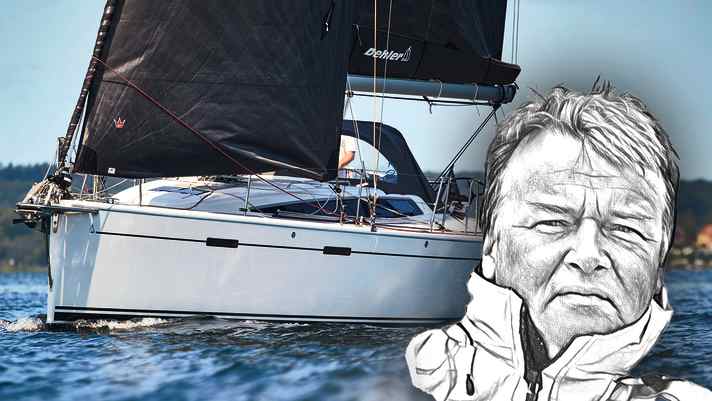
My wife and I have been sailing the boat since 2017, when we bought it new. Before that, we had been travelling with a much smaller Sunbeam 26 for twelve years, which was wonderful for a long time, but at some point the size of the boat and the low initial stability started to bother us. The radius of action on holiday became too small for us, and the compact boat reached its limits at some point, especially when the wind was against us, and got too bogged down in the short Baltic Sea wave. A colleague advised at the time: "If you're expanding, don't just take one step, but at least two." From 26 to 38 feet, it was more like four steps for us.
This was also made possible thanks to my brother-in-law, who suggested a community of owners. We implemented this and it works brilliantly.
The boat had already impressed me completely during the test"
We opted for this type and size of boat because we wanted a bit more of everything: more action radius, more speed, more space, more seaworthiness. And also less position, less lack of space, less rough movements. We chose the Dehler 38 because it had already completely impressed me during the YACHT test in 2013. The boat sails superbly and is great fun to steer. The deck layout is perfect for single-handed sailing and therefore suitable for small crews. I also like the German Cupper system and six winches. Below deck, it's still a boat and not a dentist's surgery, the galley is great in terms of stowage and working conditions, and the space is just right.
I also sailed my first international regatta, Cowes Week, on a Sprinta Sport from Dehler and subsequently had a lot to do with Judel/Vrolijk during my racing phase, who later designed the Dehler 38. All good reasons in favour of the boat from my point of view.
Below deck, the Dehler 38 is still a boat and not a sailing dental practice!"
We are now moored on the Flensburg Fjord, with direct access to the Danish South Sea, one of the most beautiful sailing areas in the world. We are sometimes travelling there with guests, sometimes single-handed, but mostly as a couple. In summer, our favourite places to go are the eastern Swedish archipelago, this year the western Swedish archipelago and Norway.
And there's another nice thing about the size of the boat: it actually opens up all sailing areas worldwide. We already have a plan ...
Sören Reineke, picture editor
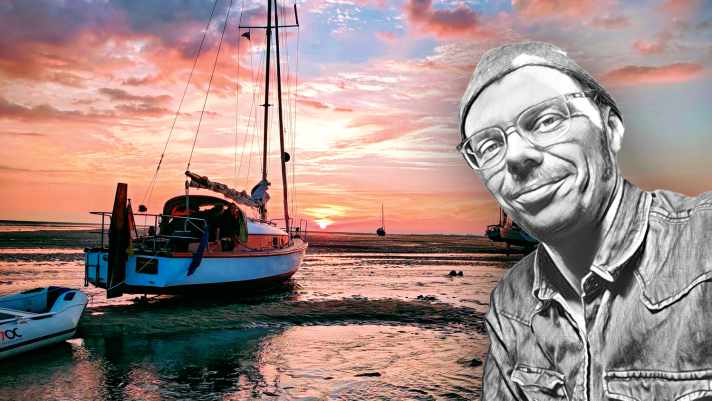
Spring 2014: Dad calls. He wants me to come to a boat shed. He's there "just having a look". You can guess that when I arrive, the purchase contract has already been signed and my father is the new owner of an old but fit 30 dinghy cruiser. "Submarine" steel underneath, classic wood on top and inside. Only the mast is supposedly still hanging in a pub on Spiekeroog - well then!
Jeez, Dad!"
Hardly any draught, no sea fence, little freeboard - but freedom close to the water! In other words, a ship from and for the Wadden Sea, our home. For years, Vadder, often enough with me in tow, went on trips with the "Klaus Störtebeker III" from Wilhelmshaven, which had just been rescued from decay. Cruising with a classic, robust two-master. From then on, it's off across the flax with the Jolli. Three generations are now on board: Dad, who is now also a grandad, me and my little ones, his grandchildren. On the way: falling dry. Breathe and look. Experiencing nature.
A new community has emerged from the former owners' association. Last year we enjoyed what felt like our first season on the mudflats. But an old boat like this is not all fun. Instead of chatting with other owners about their boat and ours, work is the order of the day. The ravages of time are taking their toll. This season, the Jolli hasn't even been back in the water yet. Instead: Knocking off rust, welding, sanding, painting. The "Störtebeker" also still needs care and attention. And what is dad doing? He's "just having a look" for a boat again!
Andreas Fritsch, travel editor
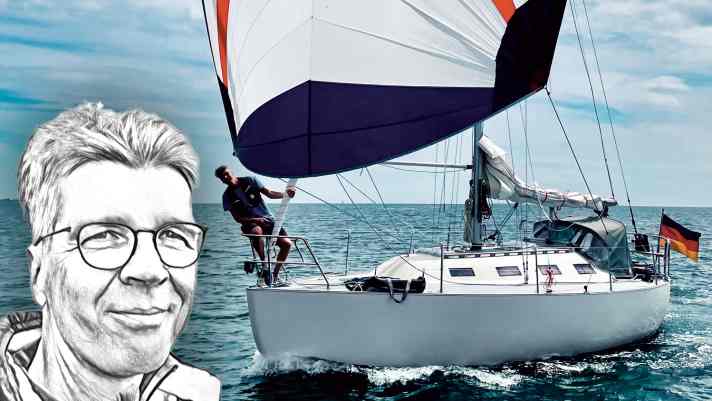
I have been travelling with a Danish style icon for four years: a Grinde by designer Peter Bruun. His design was honoured with the Danish Design Award in the seventies - and is still the only series-produced yacht. The eight-metre boat is a pointed-rigged yacht and is now 45 years old. The purchase was more of a coincidence: when my wife and I felt like having our own boat again after many years of charter sailing, we didn't have a favourite. The only thing that was clear was that we had started to get bored of the same old mass-produced boats.
We were already familiar with the Grinde as a boat type, having had one moored at our jetty in Maasholm for a long time. When we went to view the boat, we fell in love with its curves straight away. Our last boat together was only 24 feet in size, so we have increased our size considerably! We wanted as much space as possible. The Grinde offers this, thanks to its enormous width of 3.12 metres. Among connoisseurs, she is therefore also known as the smallest ten-metre yacht in the Baltic Sea.
Pure sailing, just like in childhood!"
Otherwise, comfort was not important to us; we love minimalist, spartan sailing. No fridge. Toilet yes, but no wet room. No compartments with doors. Spirit cooker instead of gas cooker. No anchor windlass. In short: sailing as pure as it was when I was a child. Always close to the water.
The great strength of the Grinde is its excellent seakeeping behaviour. It goes smoothly through the waves and is fast on the move. What we didn't realise before: With the purchase, we slipped into the German fan circle of Grinde sailors, a great community. Everyone here helps everyone else with technical tips and tricks, there are regular meetings; and if there's another Grinde in the harbour, there's always something to chat about and look at.
Connoisseurs like to call the Grinde "the smallest ten-metre yacht in the Baltic Sea"
We are particularly pleased that we now spend all our holidays on the boat. We haven't travelled privately since the coronavirus. The trips regularly took us along the German Baltic coast, to Denmark and Sweden. Our home harbour is on the Schlei.
But I admit: as a professional charter sailor, I dream of one or two seasons in Greece and Italy with our "Lille". I wonder if it will ever materialise.
Michael Good, head tester
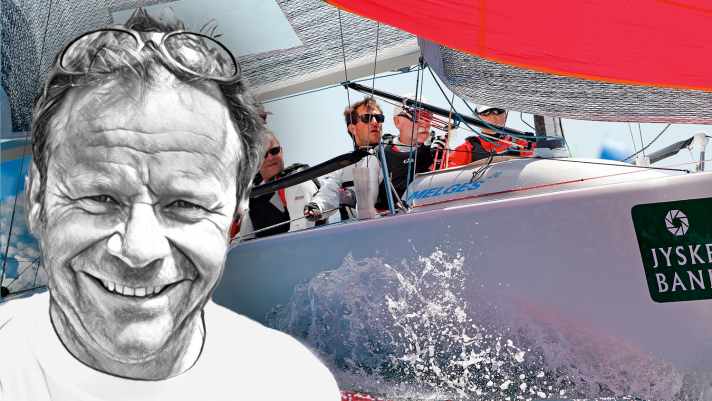
I can call not one, not two, but three sailing boats my own. I usually find that very nice and good. But there are exceptions. After all, owning a boat always means looking after it, moving it and maintaining it. And unfortunately, the more boats you have, the less money you have to spend. Regardless, the joy prevails, even if time is sometimes short. And so, on the one hand, I am the proud co-owner of a 45 National Cruiser built in 1917.
This is a long, beautiful classic, 10.5 metres by 2.20 metres, carvel-planked in mahogany, with a classic wooden whipping mast. We bought the "Schnuppe" as a barn find more than 30 years ago and subsequently restored it completely. Sailing a classic of this calibre feels a bit like cruising along the American highway in an old Cadillac - feudal and as straight as possible. Nevertheless, we have never spared the "Schnuppe" in the toughest regattas on Lake Constance.
Whether in a team or single-handed - the main thing is to be fast!"
In stark contrast to this is the Melges 24, a modern sports boat with high performance potential for the ultimate regatta sport in the single class. Since 2003, we have been sailing across Europe with the 7.30 metre long, 800 kilogram keelboat in tow, covering many thousands of kilometres from event to event. In 2025, the World Championship will take place in Hyères in the south of France, a great long-term goal for me and my team.
The third boat in my small fleet is a Finn dinghy. I take part in many regattas with this single-handed dinghy, both in my home country of Switzerland and abroad. The Finn class is currently enjoying huge popularity. For most people, the fast, uncomplicated regatta fun is tempting. For me, it's a nice change of pace.
Martin Hager, Editor-in-Chief
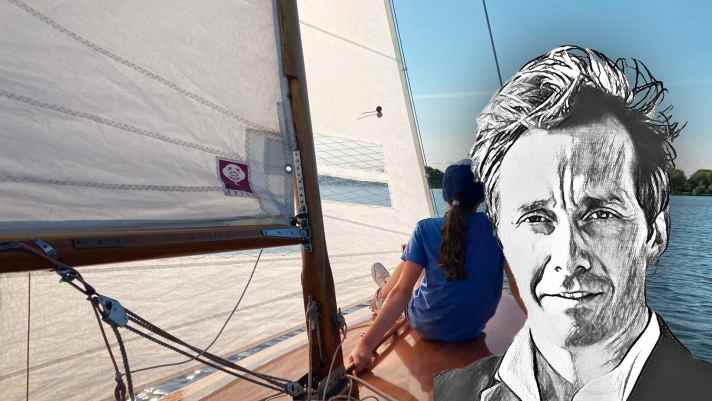
You don't need a particularly large boat to have a lot of fun on the water. To be precise: 5.80 metres and 15 square metres of sail are enough! A mooring that's just round the corner and easy to reach by bike rounds off the perfect package for me. I am currently sailing on the first towing bird ever built. The history of the 235-kilogram plywood dinghy is closely linked to YACHT. It was created as part of a design competition organised by our magazine and was built and launched in 1960 by the K. Vertens boatyard in Winning near Schleswig.
A wonderful feeling"
Construction number 1 is appropriately named "Zugvogel" and is owned by the Delius publishing family from Bielefeld. They had the dinghy extensively restored in 2010 to mark the 50th anniversary of the class. For two years now, I have been looking after the classic with the eye-catching sail number G1 as "boatswain", which is moored at the Norddeutscher Regatta Verein and whose home waters are the beautiful Outer Alster in Hamburg.
Sailing in the centre of a metropolis of millions is a wonderful feeling that I love to share with my family. Our three children, aged between five and 13, love the old classic, which always attracts attention. We often experience that the Zugvogel, both with keel and centreboard, is an extremely popular class. We have had to answer the question shouted across the water: "Is that really construction number 1?" several times. To date, over 4,000 of both versions have been built.
The history of the 235-kilogram plywood dinghy is closely linked to YACHT"
The DSV regards the Zugvogel as a national standardised class in which German championships are sailed. But that's not enough for me. The Hamburg Summer Classics classic car regatta is on my event programme in August. The "Zugvogel" will certainly feel at home among like-minded people.
Jochen Rieker, Editor
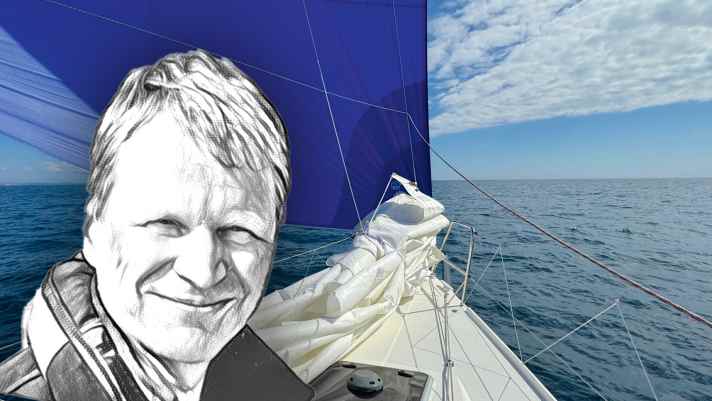
Buying a second-hand boat is usually a conscious decision that is preceded by a lengthy search. It was different for me. My latest acquisition found me more than I found it. The Sun Fast 3600 stood neglected for three years on the site of a former clothes hanger factory not far from the Adriatic. Her interior was raw and unfinished, the gelcoat a mixture of moss and Sahara dust. It took a lot of imagination to visualise it gleaming white over a deep blue sea. Because I didn't lack it and because I knew the type of boat well, which still achieves top results in IRC long-distance regattas today, I signed up far too quickly. I thought I could manage the little bit of boat building that would be necessary.
I could manage a bit of boat building"
Six months later, it was clear that it wasn't that simple. Even with the help of a local project manager, everything took longer than planned. Last summer's sailing holiday was limited to day trips in the bay of Portorož because there were simply still too many construction sites.
In the meantime, however, she has come a long way and has 400 nautical miles on the log since Easter, half of them single-handed. She has travelled through the Kornati islands and seen Istria. And she's doing great. Andreas Berg, a composite expert I met in Boris Herrmann's Team Malizia, will be coming round soon. He's working on a saloon table made of carbon sandwich and will encapsulate the retractable bowsprit that sets my Sun Fast apart from the standard boat. I can hardly wait to sail her again!
Max Gasser, Volunteer
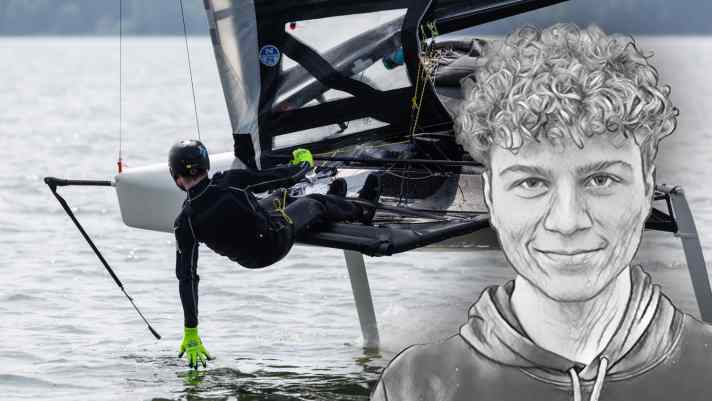
When I bought my first foiling boat straight after leaving school, I realised a small dream that I had cherished since my early Opti days. I quickly caught foiling fever, even though the boat was not in the best condition for the budget and lagged far behind the development of the class. When more training sessions ended with significant material damage than with a healthy boat, I sold 2023 in the middle of the season and looked around for a new Moth.
Quite aloof"
However, since the first boats took off in the early 2000s, not only did the speed records skyrocket with increasing technology, but so did the costs. In the end, without any boatbuilding experience, I was persuaded to buy a hull that had been storm-damaged and unpainted. I made it airworthy again within six months. The aim was to put together a boat that was as competitive as possible at the lowest possible price. Numerous hours went into reinforcing, fitting, painting and rigging. And then, of course, into flying - after all, you can't get enough of the fast-paced ride at lofty heights.
Lars Bolle, Editor-in-Chief digital
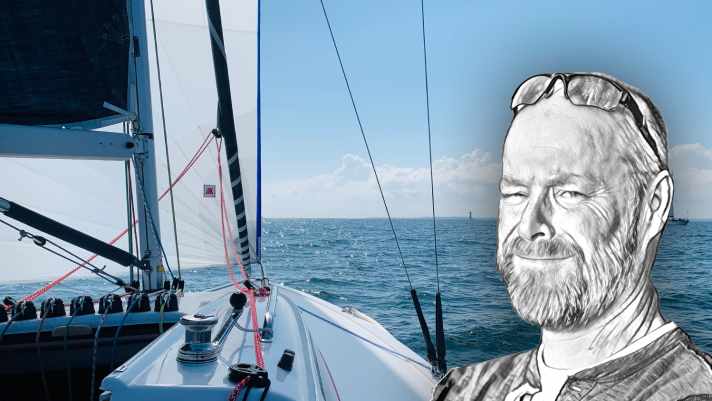
The criteria for choosing my current boat, a JK 28, were almost the same as for its predecessor. This was a 20 dinghy cruiser, 1970, solid wood, mahogany on oak. The sailing area is the Lower Elbe in the Wedel area. In other words, a tidal area. Variable draught for falling dry and to extend the entry and exit window from the harbour were among the wishes, as well as rudimentary comfort for rare overnight stays and trailerability to quickly reach other areas. There were no plans for a total refit over two winters, which simply turned out to be necessary. Afterwards, however, there was a real gem in the harbour and it wasn't even slow, as a victory in the Elbe Senate Prize showed.
But over the years, the maintenance work simply took too much time and you don't make a new boat out of a 50-year-old boat despite all the modernisation work.
I was immediately convinced by the concept"
The JK 28 was launched in 2015, built by Thomas Bergner Bootsbau in Trappenkamp in Schleswig-Holstein. A new, modern dinghy cruiser that immediately interested me as a dinghy sailor. I was lucky enough to test the prototype on the Elbe in 2015 and was immediately impressed by the concept. At 8.50 metres in length, it offers more space below deck than a 20-metre boat, four people can sleep comfortably and the forward berth in particular is huge. With a width of 2.55 metres, it can be towed without a special permit, and with a weight of around one tonne, a mid-range car is sufficient as a towing vehicle.
I was impressed by the concept of the cake stand. The rods required for the cover were integrated into the overall concept so that the main living area of the dinghy cruiser, the cockpit, can be used quickly and easily. A channel has been moulded into the side decks, into which the poles of the cover are laid and therefore do not have to be laboriously attached and detached - all that remains to be done is to throw over the tarpaulin. At the same time, the channel serves as a water drain and guarantees a dry bum.
A dinghy cruiser with space and safety"
The biggest difference to a conventional dinghy cruiser is the ballast centreboard, which is otherwise forbidden according to the class rules. So there was always a certain fear of capsizing on my wooden dinghy. This is because normal dinghy cruisers derive their righting moment primarily from their dimensional stability. The lead-filled carbon half-shells of the JK 28 weigh 225 kilograms. The ballast centreboard can be completely retracted into the centreboard box, which can be done quickly and effortlessly thanks to a large magic wheel in the bow. Together with the retractable rudder, the draught can be reduced to around 20 centimetres, which was very useful for us once in the harbour of Vitte on Hiddensee, in addition to the dry-docking option. Despite the harbour being full, we were able to get a place directly on the first jetty under land, where normally only smaller motorboats are moored. With the additional ballast, the boat does not become a sea-going keel yacht, but the capsize safety increases significantly.
I was simply thrilled with the boat. However, the decision to buy continued to ferment for a few years, partly because there were no second-hand boats available, as the boat was still brand new. However, when a club mate bought the prototype and I kept seeing it in my home harbour, the desire took over.
The maintenance effort tends towards zero"
Five years ago, the time had come. My 20 dinghy cruiser was sold and my new JK 28 left the boatyard. I have never regretted the purchase. Weekends and regattas on the Elbe as my main use, plus holidays in the waters of Rügen or the Schlei as far as Denmark were possible without any problems, even with four people on and below deck. And, not to forget: Because it was a new GRP boat, the maintenance effort in winter tended towards zero.
Hauke Schmidt, Editor
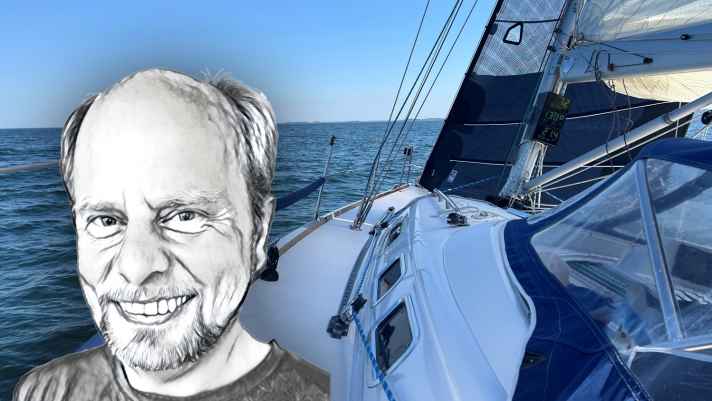
You can't sail on two boats at the same time, but we can still afford the luxury of a small shipping company. Our beloved Bianca 107, which we have taken on countless summer trips to Norway and to the end of the Baltic Sea over the past 30 years, is currently winterised, or rather summerised, and packed away dust-tight in the winter storage shed. Last autumn, the opportunity arose spontaneously to acquire an X-37. Although we are still delighted with the workmanship and sailing characteristics of the Bianca, we had been thinking about expanding for some time.
Faster, higher, further!"
In addition to more storage space for the sailing dinghy and other toys, the main focus was on long-distance suitability. In short, the motto was: faster, higher, further. The family also agreed that it had to be another Scandinavian boat with a cosy interior. Alongside a Luffe or Arcona, the X-37 fitted the bill perfectly. The biggest advantage of the performance cruiser, which was developed in 2004, is its speed potential. With a yardstick value of 84, the X outperforms most much larger and more modern boats, but still fits into the available summer and winter storage space, which hardly increases the maintenance costs compared to the Bianca. However, the distances and radius of action increase significantly.
As is typical of X, the ergonomics in the cockpit and the design of the fittings and trims are impressive, and the boat is extremely comfortable to handle in all conditions. Our version was originally ordered for regatta sailing and has a 2.30 metre deep sports keel, which ensures plenty of stability even without a crew on the high edge, despite the moderate width of less than 3.50 metres. She can easily cope with pushes and only gets faster, which is particularly beneficial in unsteady weather.
The X is always fun"
Speaking of weather, our experience so far has been that the X is always in a good mood, regardless of whether it's light winds and smooth water or a cross at 25 knots and seas from the front. We particularly like the sea behaviour in the short Baltic Sea wave; with her slim foredeck, she doesn't get bogged down, but runs light-footedly over the wave without losing any significant speed. It doesn't matter that we have to compromise on interior volume compared to other 37-footers, after all, we were looking for a superior mile-eater, which the X can do like hardly any other boat of this size.
Morten Strauch, Editor
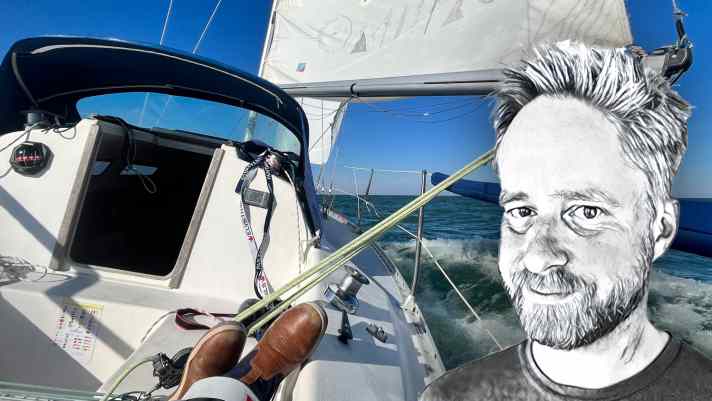
The first Hanse, the 291, was based on the design of the Swedish Aphrodite 29 and was built in Greifswald from 1993 to 1997. It became known as the "price hammer", as it was available for 44,444 Deutschmarks at the time. Remarkably, the Hanse has hardly lost any of its value in 30 years. Second-hand boats are still being traded for around €20,000, but this is also due to the fact that the originally very spartanly equipped ship has generally been heavily reinvested in.
She sails really well!"
The interior is quite plain and you won't find any headroom. On the other hand, the 29-footer offers plenty of space, especially when travelling alone or in pairs. However, this boat was chosen because of its renowned sailing characteristics and seaworthiness in strong winds. I bought it together with my colleague Christian Tiedt during the coronavirus pandemic. I really got to know "Svea" on single-handed trips around Rügen in wind and weather. And she sails really well! She doesn't need much wind to get going, and in strong winds she always gives you a feeling of control and safety. Her new home waters are the Flensburg Fjord.
Lasse Johannsen, Deputy Editor-in-Chief
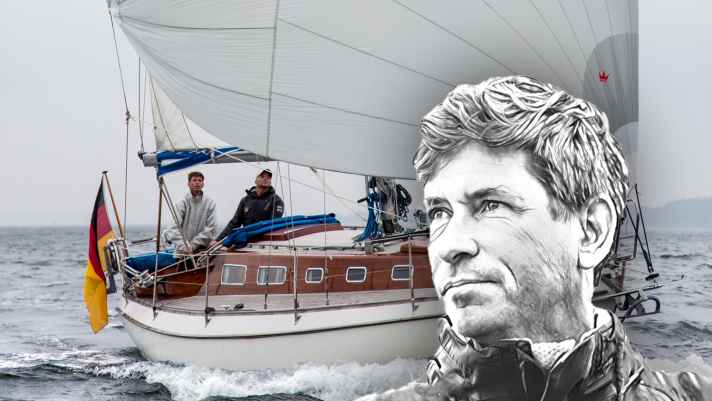
The Vindös were real eye-catchers at the boat shows of the 1970s. At a time when GRP yacht building had long since established itself and varnished wood could only be found in the exhibition halls on the stands of a few small shipyards that no longer wanted to take the new path. Or the Swedes from the small island of Vindön, who consistently opted for composite construction, where you couldn't even tell that the hull was made of resin and fibreglass.
Carl Andersson's shipyard has achieved this masterfully with a traditionally laid teak deck, natural varnished mahogany superstructure and a solid wooden interior. On a Vindö, you only realise that you are on a plastic boat when you look behind the scenes.
Masterly woodwork"
The nostalgics among the sailors were addressed, and then as now there seem to be enough of them, because the order books of the Nötesunds Warf A/B were always full and the Vindös have retained a loyal fan base to this day.
The different types were named after the number of square metres of sail area. They were available in the sizes 18, 22, 30, 32, 40, 45, 50 and 65. There was also a 75 and a 90, which did not have the classic wooden superstructure.
Numerous working hours in winter"
At nine and a half metres long and three metres wide, the 40 is a rather small long-keeler by today's standards. It was built around 600 times in around ten years from 1971 onwards. The owners value their classic-looking boats, which are not only easy to live with in the harbour, but also in almost all conditions at sea that can be found on the Baltic Sea in summer.
Today, maintaining these boats requires numerous hours of labour in winter. Unlike a pure GRP yacht, there are maintenance activities that, if postponed, would quickly lead to real damage. Nevertheless, the boats are usually owned and sailed by their owners for many years.
Nils Leiterholt, Volunteer
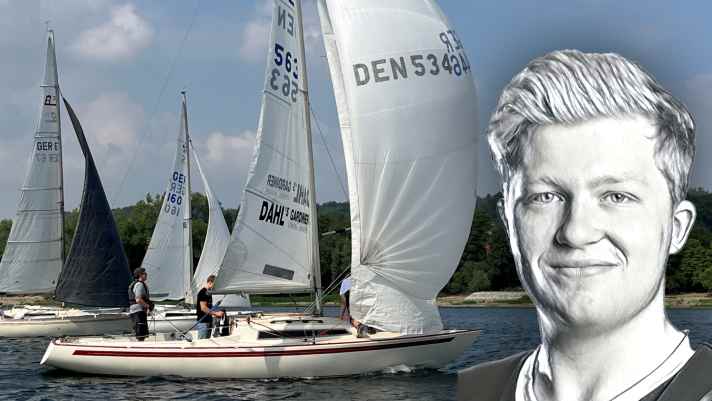
As it always is. At the New Year's Eve party at the turn of the year 2021/2022, a good friend from our sailing club offered me his H-boat from Botnia. It was built in 1980 and had been in his possession for around ten years, and we had already won a club regatta together on the boat. A few days after the party, I put our agreement in writing and bought my H-boat. This also meant that we sold our family Varianta 65.
I appreciate the versatility"
Since then, my H-boat has been moored at our club jetty on Lake Möhne during the season. However, while I didn't get to sail it as much in the first two seasons due to my training, it has been sailed a lot this year. I particularly appreciate the versatility of the H-boat. I can go out on the lake with my friends, drop anchor or take part in the odd regatta with the boat. I would definitely like to intensify the latter in the future and sail in one or two class regattas. But a longer cruise, like the previous owner did with our boat for three weeks in Croatia, is also on my list. For me, however, I'd rather head north to the Baltic Sea.
All in all, I have to say that our H-boat fulfils all my requirements and I can't imagine exchanging it for another boat at the moment.
Michael Rinck, Editor
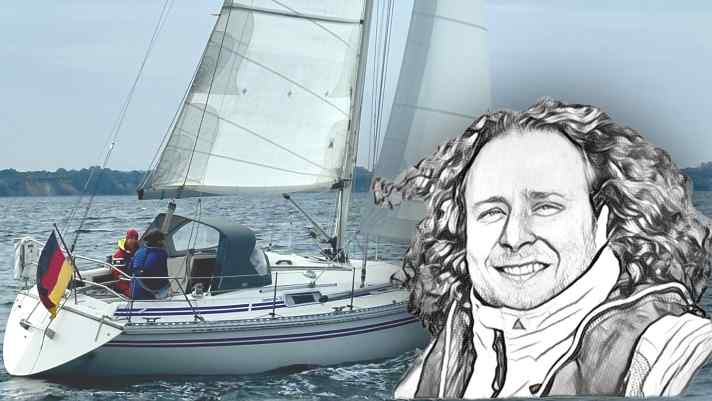
We are now sailing a Comfortina 32 for the second season. Previously we sailed on a 27-footer, the 1.5 metre increase in boat length is a huge difference. There are now doors! A toilet door and one that closes the aft cabin. The difference is also reflected in the slightly higher average speed, but the added comfort is even more significant. What felt like hard-won miles on 27 feet, I now don't even have to put on my oilskin thanks to the sprayhood.
Even more space would be nice"
But even with the larger boat, my wife Tina and I have already realised that even more space would be nice. After all, our crew of two adults and an on-board dog has grown to include our son this spring. The equipment for the baby immediately filled the previously vacant storage space. Thanks to parental leave and a few miles with the baby on board in our wake, we have settled in very well on our Comfortina.
For us, she is a very good mixture of a cosy Swedish interior with plenty of space (with a beam of 3.30 metres, the Comfortina 32 is already very voluminous) and yet good sailing characteristics.
When we started our search in autumn 2022, the used boat market, which had been emptied due to the pandemic, was just recovering. The Comfortina 32 had been built over 800 times and during our boat search, around two new Comfortina 32s were added to the advert portals every week. So there was plenty of choice for this model alone. After sorting out offers with a steering wheel instead of a tiller, a teak deck and obvious major defects, we were left with a few boats worth looking at.
Rarely has a winter passed so slowly"
We looked at five in total. When you've inspected the same boat model four times and sailed it for a trial period, you become an expert in this type of boat. With our Comfortina, the spark was immediately ignited. The boat was very well maintained and looked great for its almost 30 years. That doesn't say everything, but it's a very good sign. A look at the crucial areas revealed very good substance, and fortunately the very good first impression was confirmed. But then we had to wait a whole winter, as the boat was already ashore when we inspected it. Rarely did a winter pass so slowly until our new boat was finally afloat and we could take delivery of it!
The first season was super exciting and the Comfortina 32 immediately proved its worth in many situations. Now that we are on parental leave, it has already become a real little home for us.

